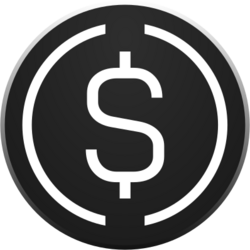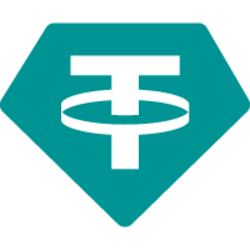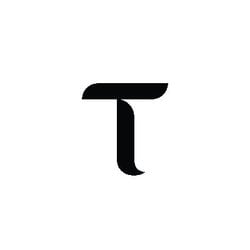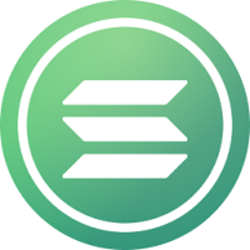Sure! Below is a detailed and informative email template that addresses “Question & Update Email for Virtual Assistants, Remote Workers, Executive Assistants to CEOs.” This content is structured and formatted according to your specifications, designed to be engaging for readers and optimized for search engines.
Subject: Essential Guide: Crafting Question & Update Emails for Virtual Assistants & Remote Workers
Introduction
In today's fast-paced work environment, effective communication is pivotal for Virtual Assistants, Remote Workers, and Executive Assistants to CEOs. A well-crafted Question & Update Email can streamline workflow, enhance productivity, and foster stronger professional relationships. This guide emphasizes essential elements, practical tips, and expert insights on writing impactful emails relevant to this unique role in the corporate landscape.
The Importance of Effective Communication
In a world where remote work is becoming the norm, efficient communication holds immense value. For Virtual Assistants, Remote Workers, and Executive Assistants, the ability to convey updates and pose pertinent questions can significantly affect project outcomes. Miscommunication can lead to mistakes that impact productivity, brand identity, and even deadlines. Therefore, mastering the art of email communication is critical.
Moreover, when your email reflects clarity, intention, and professionalism, it enhances your credibility among colleagues and superiors. A well-structured message is a powerful tool that not only conveys information but also demonstrates your organizational skills.
Section 1: Understanding the Role of Virtual Assistants and Remote Workers
Virtual Assistants (VAs) and Remote Workers play an essential role in today’s business landscape. They perform a wide array of tasks ranging from administrative support and customer service to social media management and content creation. The effectiveness of their role hinges not only on their skill set but also on their ability to communicate effectively with their teams and executives.
Remote work environments demand heightened communication due to physical distance and varying time zones. Thus, creating structured emails that incorporate questions and updates becomes essential. The lack of face-to-face communication can lead to misunderstandings; therefore, it is vital to encourage a culture of open and clear dialogue.
Section 2: Crafting the Perfect Question and Update Email
To create an effective email, you must understand its structure and components. The first step is to determine the purpose of your email—be it asking for information, providing an update, or requiring feedback.
Here’s a simple framework to begin with:
- Subject Line: Make it concise yet informative. Indicating that this email contains questions or updates will prepare the reader for what to expect.
- Greeting: Start with a professional but friendly greeting to set a positive tone. Acknowledge the recipient's recent efforts or achievements when appropriate.
Moving forward, it’s crucial to get straight to the point in the body of your email. Be explicit about your questions or updates. Subdividing your email into bullet points or numbered questions can enhance readibility, ensuring the recipient can quickly identify action items and important information.
Section 3: Essential Elements of a Question & Update Email
When drafting your Question and Update Email, consider the following elements:
Clarity and Brevity: While it’s important to be thorough, excessive information can overwhelm the reader. Use clear language and concise sentences to convey your message.
Contextual Background: If your email communicates updates, providing background information can help the recipient understand the context. This might include changes in projects, deadlines, or any developments that are crucial for comprehension.
- Call to Action: Closing your email with a straightforward call to action can guide the recipient on the next steps. Whether you require a reply, additional information, or approval, defining the expected outcome increases the effectiveness of the communication.
Section 4: Examples of Effective Email Templates
To help you find the best format for your Question & Update Emails, here are two exemplary templates to consider:
Template 1: Follow-Up Email with Questions
Subject: Follow-Up on Project X - Questions Needed
Hi [Recipient's Name],
I hope this email finds you well. I wanted to follow up regarding Project X and have a few questions:
- Current Status: Could you provide an update on the status of the deliverables?
- Timeline Adjustments: Have there been any changes to the scheduled timelines?
- Team Involvement: Is there any additional input required from the team at this stage?
Thank you for your help! Looking forward to your response.
Best,
[Your Name]
Template 2: Update Email with Questions
Subject: Update on Meeting Outcomes – Inputs Required
Hello [Recipient's Name],
I wanted to update you on the outcomes of our recent meeting:
- Project Timeline: We are on track to begin the next phase by next month.
- Feedback Implementations: The team is working on the feedback received.
Could you please confirm if the July 15 deadline is feasible for the next report, or if any adjustments are needed?
Thank you!
Kind regards,
[Your Name]
Section 5: Common Mistakes to Avoid
When writing emails, especially in a professional capacity, it’s easy to fall into common pitfalls:
Neglecting the Subject Line: A vague subject line can lead to your email being overlooked. Always ensure that your subject line clearly indicates the content of your email.
Overloading with Information: While context is important, overwhelming the recipient with too much information can reduce the chance of them responding. Stick to essential updates and direct questions.
- Avoiding Follow-Up: If you don’t get a response, don’t hesitate to follow up respectfully. Framing a simple “Just checking in…” can remind the recipient of your communication while showing your initiative.
Section 6: Best Practices for Virtual Communication
In the realm of remote work, maintaining effective communication can be challenging yet crucial. Here are some best practices to consider:
Utilize Tools: Make use of email tracking tools to gauge whether your emails have been opened—this can inform your follow-up approach.
Maintain Professional Tone: Even though virtual interactions can feel less formal, maintaining professionalism is imperative. It reinforces respect and seriousness in your communication.
- Set Expectations: Clearly outline deadlines or the need for responses within a specific timeframe to keep projects moving smoothly.
Conclusion
Writing an effective Question & Update Email requires thoughtfulness, clarity, and a structured approach. For Virtual Assistants, Remote Workers, and Executive Assistants to CEOs, mastering this skill is essential in fostering efficient communication and leading to productive collaborations. By implementing the tips and examples provided in this guide, you can enhance your professionalism and reliability in any remote working scenario.
This comprehensive email template provides a detailed discussion of Question & Update Emails for Virtual Assistants and is designed for SEO with the intent of ranking well in search engine results. You can further personalize sections according to your preferences or needs.
Bitcoin(BTC)$107,586.00-1.53%
Ethereum(ETH)$4,379.73-1.75%
Tether(USDT)$1.000.00%
XRP(XRP)$2.73-3.98%
BNB(BNB)$855.11-0.80%
Solana(SOL)$197.50-3.71%
USDC(USDC)$1.000.00%
 Lido Staked Ether(STETH)$4,368.55-1.73%
Lido Staked Ether(STETH)$4,368.55-1.73%TRON(TRX)$0.338268-0.69%
Dogecoin(DOGE)$0.209819-4.35%
Cardano(ADA)$0.81-3.35%
 Wrapped stETH(WSTETH)$5,293.36-1.84%
Wrapped stETH(WSTETH)$5,293.36-1.84%Chainlink(LINK)$23.04-3.43%
 Wrapped Beacon ETH(WBETH)$4,718.44-1.81%
Wrapped Beacon ETH(WBETH)$4,718.44-1.81%Wrapped Bitcoin(WBTC)$107,626.00-1.86%
 Ethena USDe(USDE)$1.00-0.02%
Ethena USDe(USDE)$1.00-0.02% Hyperliquid(HYPE)$44.24-1.00%
Hyperliquid(HYPE)$44.24-1.00% Wrapped eETH(WEETH)$4,693.84-1.77%
Wrapped eETH(WEETH)$4,693.84-1.77%Sui(SUI)$3.18-4.81%
Stellar(XLM)$0.346934-4.73%
Bitcoin Cash(BCH)$535.93-2.82%
Avalanche(AVAX)$23.11-3.61%
 WETH(WETH)$4,378.39-1.77%
WETH(WETH)$4,378.39-1.77%Cronos(CRO)$0.279206-7.15%
Hedera(HBAR)$0.214301-5.88%
LEO Token(LEO)$9.620.27%
Litecoin(LTC)$107.86-3.24%
 USDS(USDS)$1.000.01%
USDS(USDS)$1.000.01%Toncoin(TON)$3.11-1.04%
Shiba Inu(SHIB)$0.000012-4.13%
 Binance Bridged USDT (BNB Smart Chain)(BSC-USD)$1.00-0.03%
Binance Bridged USDT (BNB Smart Chain)(BSC-USD)$1.00-0.03% Coinbase Wrapped BTC(CBBTC)$107,532.00-1.53%
Coinbase Wrapped BTC(CBBTC)$107,532.00-1.53% WhiteBIT Coin(WBT)$41.96-1.57%
WhiteBIT Coin(WBT)$41.96-1.57%Uniswap(UNI)$9.41-4.56%
 Ethena Staked USDe(SUSDE)$1.190.07%
Ethena Staked USDe(SUSDE)$1.190.07%Polkadot(DOT)$3.69-4.40%
 Bitget Token(BGB)$4.51-1.12%
Bitget Token(BGB)$4.51-1.12%Monero(XMR)$264.001.40%
Aave(AAVE)$311.49-3.86%
Dai(DAI)$1.00-0.02%
 Ethena(ENA)$0.63-5.72%
Ethena(ENA)$0.63-5.72% Pepe(PEPE)$0.000009-5.27%
Pepe(PEPE)$0.000009-5.27%Mantle(MNT)$1.15-2.71%
OKB(OKB)$167.68-7.75%
Ethereum Classic(ETC)$20.48-3.23%
 Bittensor(TAO)$311.13-4.77%
Bittensor(TAO)$311.13-4.77% Jito Staked SOL(JITOSOL)$242.29-3.79%
Jito Staked SOL(JITOSOL)$242.29-3.79%NEAR Protocol(NEAR)$2.34-5.49%
 POL (ex-MATIC)(POL)$0.2782876.19%
POL (ex-MATIC)(POL)$0.2782876.19%Aptos(APT)$4.18-4.04%












